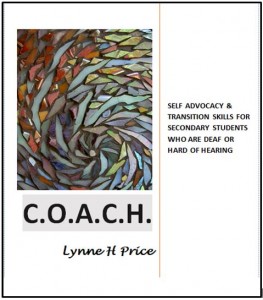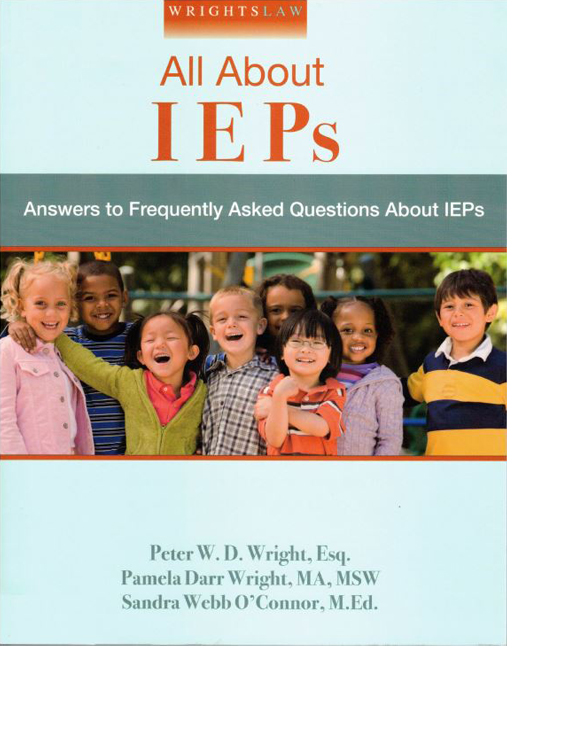Related Products
For Professionals
- Amplification
- Assessment of Student Skills, Challenges, Needs
- Early Childhood: Infants, Toddlers, Preschool
- Hearing Loss – Identification, Impact and Next Steps
- IDEA Law Summary Information
- Language and Speech Development Issues
- Legal Issues in Serving Children with Hearing Loss
- Listening (Auditory Skills) Development
- Planning to Meet Student Needs
- Self-Advocacy Skills for Students with Hearing Loss
- Self-Concept: How the Child with Hearing Loss Sees Himself
- Social Skills
- Speech Perception & Learning
Related Teacher Tools Takeout Items
Transition Planning for Adulthood
 “The transition statement shall be the guiding force for developing each IEP for students 14 years of age and older (or younger if appropriate). A statement of transitional services needed to foster movement from school to post-school activities shall be developed. The statement shall include, when appropriate, objectives for instruction, community experiences, employment and post-school adult living.”
“The transition statement shall be the guiding force for developing each IEP for students 14 years of age and older (or younger if appropriate). A statement of transitional services needed to foster movement from school to post-school activities shall be developed. The statement shall include, when appropriate, objectives for instruction, community experiences, employment and post-school adult living.”
There are many different resources available to assist families, students and school teams identify and work on next steps of readiness for post-high school goals. Basic information is included below along with examples of resources.
IDEA and Transition Planning
Preparing children with disabilities to “lead productive and independent adult lives, to the maximum extent possible” is one of IDEA’s stated objectives. [20 U.S.C. 1400(c)(5)(A)(ii)]. IDEA’s requirement for transition statements in the IEP read as follows: (b) Transition services. Beginning not later than the first IEP to be in effect when the child turns 16, or younger if determined appropriate by the IEP Team, and updated annually, thereafter, the IEP must include—
(1) Appropriate measurable postsecondary goals based upon age appropriate transition assessments related to training, education, employment, and, where appropriate, independent living skills; and
(2) The transition services (including courses of study) needed to assist the child in reaching those goals. [§300.320(b)]
This means that the IEP team must develop measurable goals for the student that are focused on the postsecondary world and specify what transition services are needed to help the student reach those goals.
 List of possible scholarships and support for higher education
List of possible scholarships and support for higher education
Around 20,000 deaf or hard of hearing students attend post-secondary educational institutions each year. Take time to view this detailed college support guide for persons who are deaf or hard of hearing. It touches on self-advocacy, provides an impressive Disability Services Meeting Checklist, discusses the benefit of online learning, accommodations, scholarships and more.
How will students planning to go on to higher education access instruction?
 The transition process should include close attention to how well/completely the student is able to access instruction through listening alone. Many instructors will roam a classroom or turn their backs while instructing so speechreading will not always be available. It may be prudent to try speech-to-text captioning, CART or other captioning services by the time the child is a junior or senior in high school to determine if access to verbal instruction improves as seen by less stress/energy needed by the student and improved school performance.
The transition process should include close attention to how well/completely the student is able to access instruction through listening alone. Many instructors will roam a classroom or turn their backs while instructing so speechreading will not always be available. It may be prudent to try speech-to-text captioning, CART or other captioning services by the time the child is a junior or senior in high school to determine if access to verbal instruction improves as seen by less stress/energy needed by the student and improved school performance.
Accommodations for High-Stakes Tests
 A September 2015 technical assistance on testing accommodations was issued by the Department of Justice specifying that exams administered by any private, state, or local government organizations related to applications, licensing, certification, or credentialing for secondary (high school), postsecondary (college and graduate school), professional (law, medicine, etc.), or trade (cosmetology, electrician, etc.) purposes are covered by the ADA, and testing accommodations, pursuant to the ADA, must be provided. The guidance addresses the obligations of testing entities to ensure that the test scores of individuals with disabilities accurately reflect the individual’s aptitude, achievement, or the skill that the exam purports to measure rather than his or her disability.
A September 2015 technical assistance on testing accommodations was issued by the Department of Justice specifying that exams administered by any private, state, or local government organizations related to applications, licensing, certification, or credentialing for secondary (high school), postsecondary (college and graduate school), professional (law, medicine, etc.), or trade (cosmetology, electrician, etc.) purposes are covered by the ADA, and testing accommodations, pursuant to the ADA, must be provided. The guidance addresses the obligations of testing entities to ensure that the test scores of individuals with disabilities accurately reflect the individual’s aptitude, achievement, or the skill that the exam purports to measure rather than his or her disability.
Check out the Praxis Study Companion – Special Education: Education of Deaf and Hard of Hearing Students.
Sections include: Learn about your test; Familiarize yourself with test questions; Determine your strategy for success; Develop your study plan; Check on Testing accommodations. This resource is a good review and teaching tool to prepare for any high stakes testing! 40 pages.
High stakes tests for higher education entry have their own set of guidelines:
ACT –http://www.act.org/aap/disab/policy.html
SAT –http://sat.collegeboard.com/register/for-students-with-disabilities
AP –http://www.ets.org/disabilities
Transition Skills Guidelines
Skills needed to be successful after high school include knowledge-based skills and ‘soft’ getting along with people skills. It is strongly suggested that this hierarchy be considered when developing IEP goals throughout school age. Developed in 2006 (c) by Laurent Clerc Center National Deaf Education Center K-12 Program at Gallaudet University, the Transition Skills Guidelines provide a hierarchy of explicit skills for 8 groups: Grades: K, 1-3, 4-5, 6-8, 9, 10, 11, 12. These skills can be individualized for students with hearing loss of all different communication modalities and with co-existing learning challenges.
Standard 1: Student demonstrates the skills necessary to advocate and empower for him/herself
a) self-awareness, b) rights and responsibilities, c) advocacy/empowerment, d) interpreting
Standard 2 Student demonstrates knowledge of educational and career exploration, preparation, and planning.
a) career exploration and planning, b) career materials preparation, c) educational planning, d) learning/study skills, e) life-role planning
Standard 3 Student develops positive and practical work habits, skills, and attitudes within a work environment.
a) Pragmatics/social courtesies, b) conflict resolution, c) teamwork, d) work attitudes, e) work habits, f) time management, g) resource management, h) workplace communication, i) feedback, j) performance and self-assessment, k) self-management, l) technology and equipment
a) Emergency and environmental safety, b) personal safety, c) money/banking, d) purchasing/negotiating, e) nutrition, f) clothing, g) hygiene
a) Travel, b) community roles and responsibilities, c) leisure, d) community resources, e) community service
STEM Support Resources
For those students who are interested in science, technology, engineering and mathematics there are a variety of camps and support opportunities available (not DHH specific) at
http://www.onlineschools.org/stem-resources/
Building Transition Knowledge:
The second edition of Self-Advocacy for Students who are Deaf or Hard of Hearing is a 2012 e-version written by Kristina English, PhD, of the University of Akron who has generously made it freely available. The materials in this workbook consist of 12 lessons, organized into four units with three evaluations and a summative learning activity. The lessons are free and available on Teacher Tools Takeout.
Unit 1: Introduction – What Is Self-Advocacy?
Lesson 1
Self-Advocacy: What Is It and Why Is It Important?
Unit 2: Knowledge Is My Power Base
 Lesson 2
Lesson 2My Legal Rights While in High School: My IEP
Lesson 3
My Legal Rights When I Leave High School: Section 504 and College
Lesson 4
My Legal Rights When I Leave High School: ADA and Work
Lesson 5
Transitioning: Making the Move from High School to College and Work Unit 3: Personal and lnterpersonal Skills for the Self-Advocate
Lesson 6
Setting Goals, Identifying Needs
Lesson 7
Expressing My Needs Effectively
Lesson 8
Negotiating with Others
Lesson 9
Resolving Problems
Unit 4: Putting It All Together: Using Knowledge with Skills
Lesson 10
My Role in Transition Planning: Preparation
Lesson 11
Practicing for an IEP Meeting: Participation
Lesson 12
Evaluating My IEP Participation
Planning for the Future – Resources
1) The National Deaf Center has many resources for the transitioning teen who is deaf or hard of hearing.
2) TheGuide for Access Planning (GAP) has a wide variety of checklists, planners, information and activities such as different scenarios for discussion of how to improve or advocate for improved access in different situations.
3) College Guide for Deaf and Hard of Hearing Students: In dept look at student transition into college, a guide to accommodations and assistive technology, and key strategies, resources, scholarships and more for students who are deaf or hard of hearing.
4) Minnesota Transition Guide for Teachers of the Deaf and Hard of Hearing (9/9/13) – Resources for schools and other agencies involved in the lives of transition-aged students in Minnesota who are deaf or hard of hearing.
5) Youthood’s Job Center: Learning About Work provides an interest exploration guide, skills profiler, transferable skills survey and job search guide with how to write a resume`
6) College Resources for Students with Disabilities is a very comprehensive resource providing information on planning to go to college and obtaining the resources students need for success.
7) The Planning for the future workbook is designed to help students, their families, and professionals to plan for life after high school. It uses a person-centered approach to identify student strengths and uses a problem-solving approach to develop a plan of action and a vision for the future.
8) The Occupational Outlook Handbook specifies the training and education needed, earnings, expected job prospects, what workers do on the job, working conditions, job search tips, links to information about the job marked and more.

9) My Road: A College and Career Planning provides a wealth of information such as free personality assessments, matching careers based on assessment results, information on colleges, majors, interviews, tips for applying to college and much more.
10) Explore what students in college who have disabilities are expressing as what is important and how they cope at We Connect Now which is dedicated to uniting college students with disabilities in access to higher education and employment issues.
11) College Guide for Deaf and Hard of Hearing Students
12) Academic Scholarship Opportunities for Students with Hearing Loss
15) Guide to College for Students with Disabilities
16) Guide for Students with Disabilities on Choosing a Career in Nursing
Resources
- http://www.dhhtexastransition.org/
- http://www.bestcolleges.com/resources/college-planning-for-deaf-and-hard-of-hearing-students/
- http://www.youthhood.org/jobcenter/lw_index.asp
- https://www.phonak.com/us/en/support/children-and-parents/planning-guide-for-teens.html
- http://www.bls.gov/ooh/
- https://myroad.collegeboard.com/myroad/navigator.jsp
- http://nichcy.org/schoolage/iep/iepcontents/transition
- http://www.onlineschools.org/stem-resources/
- http://arealonlinedegree.com/college-resources/resources-students-disabilities/https://www.accreditedschoolsonline.org/resources/parents-students-disabilities/For a printable handout of this information click here:
Transition Planning for Adulthood
(c) 2012 Karen L. Anderson,
Supporting Success for Children with Hearing Loss. Posted 12/28/2012 Updated July 2023.



